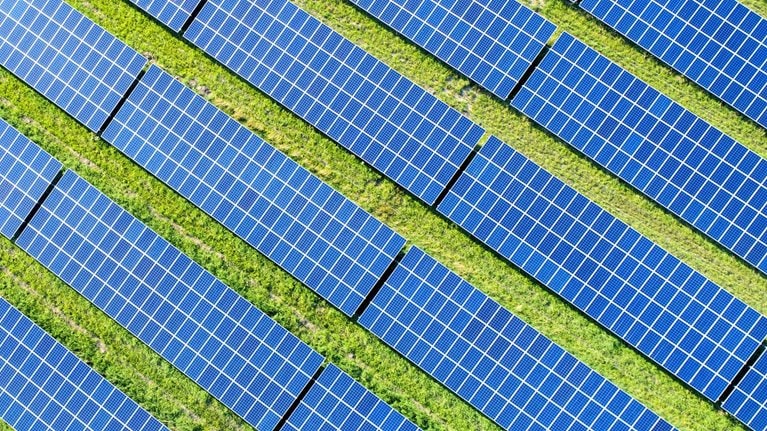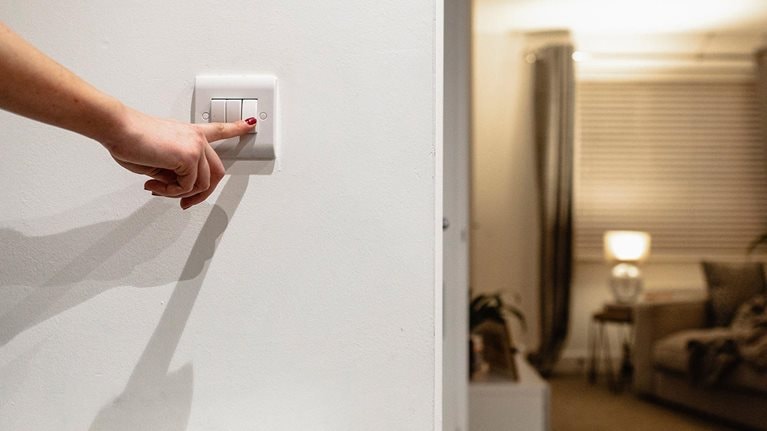Guarantees of Origin (GoOs) represent an increasingly large and fast-evolving market. After being initiated by the European Union (EU) in 2001 to enable the decarbonization of the power system, the GoOs’ market showed significant volume growth over the past years.1 Recently, price levels also increased significantly. After staying below €1 per megawatt hour (MWh) for many years since inception, prices skyrocketed to €8 and above during 2022.2 While prices have normalized slightly in 2023, they remain at historically high levels and forward curves indicate that they could remain there for a prolonged period.
As a result of the market developments, GoOs are becoming increasingly relevant for both suppliers and customers. Current price levels (€6 per megawatt hour) for renewable players supplying GoOs present a significant share of the business case (equal to approximately 0.7 percent of internal rate of return [IRR]).3 Given the oftentimes competitive subsidy schemes or the increasing merchant exposure for developers, this represents an indispensable enabler for renewables projects to take investment decisions. For customers, GoOs are a critical route to achieve decarbonization targets, especially in the medium term where other decarbonization routes remain uneconomic.
Despite the critical role GoOs play and their strong outlook, they come with significant complexities and challenges. Regulatory drivers (such as the doppelvermarktungsverbot that limits the supply of GoOs) present uncertainty about future supply.4 Moreover, evolving customer or regulatory requirements (for example, local or time stamped GoOs) could further increase complexity. These uncertainties pose fundamental questions to customers—who are determining their green power procurement strategies—and suppliers, aiming to accurately value the GoOs that their projects will generate.
McKinsey recently spoke with Marijn van Diessen, chief commercial officer of STX Group—a global environmental commodity trader and climate solution provider—about the future of GoOs, the expected evolution of the marketplace, and the strategic questions that sellers and buyers need to ask themselves.
An edited version of their conversation follows.
McKinsey: What has caused the recent volume and price developments in the GoO market?
Marijn van Diessen: Historically we have seen a sustained and fast growth in the GoO market. For instance, GoO issuance equaled 370 terawatt hours (TWh) in 2015 and doubled by 2021 to reach 747 TWh.
The GoO started as a traceability mechanism and for most years since its inception, the market was oversupplied. Recently we’ve seen the market rapidly become much tighter. This has been driven by both a rapid increase of demand for GoOs and a simultaneous reduction in supply caused by lower asset productivity and a reduced hydropower output last year.
As a result, prices and volatility in the market went up drastically: in 2018 to 2019, prices went down to around €1 to €2 per megawatt hour (MWh) and then in 2022, they skyrocketed to €10/MWh, and presently have reduced again by around 30 to 40 percent versus 2022. The key exception here is the UK’s Renewable Energy Guarantees of Origin REGO market, which was trading at £23 at time of writing. This is significant growth—the market in terms of volume has doubled and in terms of value has increased more than ten times. This also means the GoO moved from being just a traceability mechanism toward being an important part of the business case for renewables business developers and hence becoming (partial) additional.
This is a great added benefit but it’s also important to note that additionality was and never should be a requirement for the GoO market. The instrument was always designed as a traceability mechanism for consumers to make a green power consumption claim, given that there is no way to distinguish the physical product from the fossil power. It would be very strange if you would only be able to say you bought green power if you could prove your demand led to new supply. All newly created supply would then not be considered additional after a while, disregarding that production would be environmentally nonsensical: the infrastructure is there, it produces green electricity, why would it be considered invalid after a while? It is much better to push all corporates to move to green electricity—this will increase demand that creates a market signal to build new generation plants.
McKinsey: How do you expect these drivers to evolve and how will they impact the overall GoO outlook in the next five to ten years?
Marijn van Diessen: I think that supply will continue to grow, but I also believe that corporate demand, in particular, will increase as a result of new reporting requirements, such as the EU’s Corporate Sustainability Reporting Directive. However, supply is highly intermittent and demand very difficult to model, given that willingness to pay is dependent on a variety of factors. This will make the market difficult to predict and likely highly volatile for the foreseeable future.
McKinsey: Given the unpredictable outlook, how are customers looking at this market and how do you think their requirements will evolve?
Marijn van Diessen: With the uncertainty of the overall power market, many of our customers are looking to hedge their long-term GoO exposure instead of their full power exposure. Hedging their full power exposure five to ten years forward is a massive liability that involves high costs because of unclear consumption rates—so focusing on hedging primarily the green component with GoOs is a lower threshold option. This is especially true for those consumers who have the view that the overall power market will be well supplied but that the renewables power market could become tighter as a result of new policies and regulation. So, I think customers will increasingly consider longer-term GoO contracts, in contrast to 2022 when trading mostly took place for the current year or one year ahead.
Customer requirements also continue to be quite specific—for instance, they are looking for regionality or even locality, such as the Dutch preferring Dutch rather than imported wind, or Germans preferring specific GoOs generated in Germany versus those from other countries in the Association of Issuing Bodies.
Finally, I think there could be more demand for flexibility and optionality. The uncertainty in combination with higher prices means that consumers will attach a greater value to volume flexibility or options in contracts.

Decarbonize and create value: How incumbents can tackle the steep challenge
McKinsey: How can suppliers accurately value their GoOs and capture this opportunity?
Marijn van Diessen: I believe that suppliers will require forward liquidity and full-volume offtakes—as in the power markets—so that everything they produce will have a buyer. The green premium will become increasingly important to ensure continued investments into renewables, especially when those renewables are needed not to meet new demand, but to replace the remaining and most competitive fossil supply. In other words, we want the new renewable capacity not to just meet new power demand but to replace existing power capacity. Solely relying on the power market to provide the right incentives is therefore insufficient. The energy transition needs a green premium for renewables to incentivize the full replacement of fossil power production. In addition, renewables producers also will want transparent pricing in the coming years, including Argus or stockbroker quotes that provide indications of how the market is being priced.5
Players will likely also consider bundled or unbundled power purchase agreements (PPAs)—do they only go into green PPAs or do they unbundle and trade traditional power and green power separately? Large developers have in-house capabilities, which smaller developers don’t, nor do they have access to the market. So, smaller developers have reasons to turn to independent players, like STX, to provide the capabilities that they need.
McKinsey: What is needed to continue matching GoO supply and demand, especially as the market becomes more complex (for example, time-stamped GoOs)?
Marijn van Diessen: Currently, it is a bilateral market so credit lines between parties are needed to bring supply and demand together and make the market. This became harder to do last year due to the price swings, rapid developments, and volatility. Thus, credit against each other continues to be an important requirement, and solid capital and an equity base are required in counterparties.
Parties also need to aggregate more flows, as currently there is a lot of fragmentation in the market with different buyer requirements (such as the GoO location) that will need to be matched on a portfolio basis.
This situation could be further accelerated by granular GoOs as part of the production profile complexity. The number of granular GoOs is still very low but has the potential to grow significantly. Several developments point to this, including, for example, the hydrogen market where it makes sense to have granular GoO requirements that label hydrogen green or as additional power, identifying it as a flexibility provider. When that happens, further fragmentation will be created and a need will arise to shape a required GoO profile.6
McKinsey: What other effects could increased granularity in GoOs have?
Marijn van Diessen: The move to more granular GoOs could go hand in hand with a move to increased demand for and certification of green storage, which could provide customers with a truly green profile. This would create a new revenue source and improve the business case for green storage through capturing this green premium, similar to the value renewables producers receive for GoOs.
In addition, the granularity trend will mean that products remain non-standardized, leading to continued complexity in bringing together demand and supply. This has significant implications for the GoO marketplace as it will likely limit the potential to get to a platform that offers standardized products. We have seen some initiatives that have created standardized platforms; however, these have not gained much traction.
McKinsey: What role will regulators and private players have to play for the GoO market to mature?
Marijn van Diessen: Regulators aim to create traceability and accelerate the market. There are presently two systems in the European Union. The current system is the European Energy Certificate System (EECS) integrated framework, which allows for the issuance, transfer, and canceling of GoOs. An alternative that is often discussed, and is accepted by bodies like CDP, is the location-based system where companies benefit from being connected to a grid with a low-generation emission factor even if they take no specific action themselves. Both systems have their merits, but I fear that with the location-based system, the ultimate incentive for developers to build additional renewables projects is limited.
Either way, I believe that it is important that regulators stick with one of these two systems and provide a very clear and consistent framework. Moreover, as other regulatory initiatives and requirements emerge and evolve—for example, the additionality requirements for green hydrogen—it is important that GoOs are an integral part of discussions to avoid creating too many parallel systems to navigate.
McKinsey: What role do you see broader green certificates playing in the energy transition?
Marijn van Diessen: All types of certificates have a similar role: to channel investments from customers wanting to decarbonize to suppliers who need the investments to achieve this decarbonization.
Let me give you an simple anecdote that I often use as an example: say you are an individual who wants green power but you don’t have a roof for solar power because you live in an apartment block. What you can do is ask a friend with a big roof to generate green power for you. You then pay your friend for it and, even though your house does not have green power, you have achieved your goal of reducing carbon emissions. The alternative would be for you to have to move to a new apartment with a roof, but this seems silly if your friend has the space to facilitate this.
Or, as another real-life example: Western countries want to prevent emissions offsets but do not always have efficient ways to do so. In contrast, many southern countries have plenty of ways to prevent deforestation or regenerate forests, and they can use the income from the credits they sell to the West to fund such efforts.
That is exactly why green certificates are so important: to enable these types of optimizations that make the energy transition much more efficient. Each type of certificate has its own challenges. As mentioned, in the GoO market there have been discussions on the use of GoOs along with location-based claims, which creates confusion and potentially a double-claiming risk. In the carbon offset market there are many conversations around the quality of certain offsets and whether they are truly effective.
However, each of these certificates plays a critical role in the journey to net zero, and there is no doubt that we need the various types of certificates to achieve the global decarbonization targets. Therefore, these discussions should not overemphasize the shortcomings of certificates but rather focus on how we can fix the governing challenges and, more important, scale the industry as quickly as possible to achieve our climate goals.
These issues can be solved, but policy makers need to create clarity and work together with the market participants. A good example of how it should be done is the first set of European Sustainability Reporting Standards (ESRS) that the European Commission recently published, in which they clearly endorse GoOs as the primary method for proving renewable energy consumption.7 If a governing body can create this clarity, it will provide the right conditions and comfort for consumers and producers to enter into longer-term commitments that are required to incentivize new investments.


